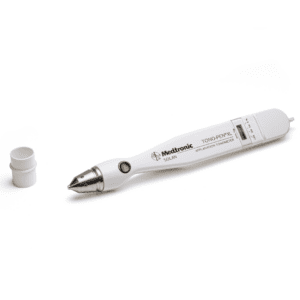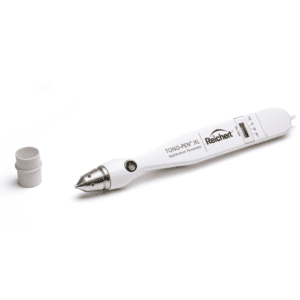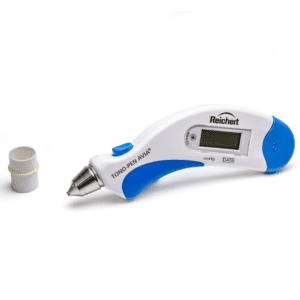When you think of the tools used in eye care, what springs to mind? Perhaps glasses, eye-drops, maybe even lasers. But have you ever given a thought to the humble slit lamp? This unsung hero of ophthalmology plays a pivotal role in diagnosing and treating eye diseases, helping to preserve and improve vision for millions around the world. In this guide, we’re going to shine a spotlight on the slit lamp, walking you through its purpose, functions, and why it’s a cornerstone of eye care. So, take a seat, lean into the headrest, and let’s raise the curtain on this compelling device.
“The slit lamp is one of the most important and versatile tools in an eye doctor’s arsenal, offering a close-up view of your eyes’ most delicate structures. Overlooked but never underestimated, this piece of equipment is crucial in managing ocular health.”
The purpose of this article is not only to introduce you to the critical and intricate work slit lamps do daily, but also to make you appreciate the sophistication of modern eye care techniques. Remember, knowledge is power, especially when it comes to understanding our body and how we care for it. Let’s move forward together as we illuminate the world of slit lamps.
Meeting an optometrist or ophthalmologist, you might have noticed them use an instrument with bright lights and multiple movable parts. This piece of equipment, my dear readers, is none other than the slit lamp, a powerful tool that clinicians use to examine your eyes in fine detail.
The design and setup of a slit lamp is pretty impressive. It comprises a high-intensity light source that produces a thin sheet of light, and it’s precisely this ‘slit’ of light that the tool gets its name from. The clinician can manipulate this slit of light to illuminate different structures of your eye, enabling them to observe, inspect, and diagnose a multitude of eye conditions.
Remember, it’s not just about the instrument, but the skilled personnel who operate it. Slit lamp technicians and paramedical staff work behind-the-scenes to ensure these machines maintain their perfect working condition. This combined effort of technology and human skill allows doctors to get the best possible view of your eye’s anatomy, therefore making accurate diagnoses and effective treatment solutions.
Interestingly, there is a wide range of different illumination techniques that slit lamps offer, each geared towards highlighting different features of your eye. Optometrists and ophthalmologists can modify the intensity, angle, and size of the slit, allowing them to focus on any area of interest. This level of control makes the slit lamp an incredibly versatile tool in the world of ocular diagnostics.
| Slit Lamp Illumination Technique | Description |
|---|---|
| Diffuse Illumination | Used to examine large areas of the eye’s surface. |
| Direct Focal Illumination | Direct light is shone onto an area of interest to examine specific tissues. |
| Conical Beam | Creates a cone of light for examination of the anterior segment of the eye. |
| Parallelepiped | The light is used to create a 3D rectangular beam which aids in the evaluation of the different layers of the cornea and lens. |
| Optical Section | Provides a cross-sectional view of the eye primarily used to evaluate depth of lesions or foreign bodies. |
| Corneal Optical Section | A narrow beam focused on the cornea to examine its depth and abnormalities. |
| Lens Optical Section | A focused light beam on the crystalline lens of the eye to examine its integrity. |
If you’re curious and want to delve deeper into the function of slit lamps, there are numerous resources available online, including video tutorials that give you an insight into slit lamp operation. For the more academically inclined, scientific publications related to slit lamps and eye examinations can be a valuable source of detailed information.
ZEISS slit lamps, for instance, are renowned for their excellent ergonomics, easy handling, and simple documentation. They also offer the potential for future upgrades, staying aligned with technological advancements in eye care. Such superior features make them a favorite amidst eye care specialists across the globe.
The role of slit lamps in eye care is undeniably significant. As we’ve seen, these devices not only help diagnose eye diseases early but also enable appropriate treatment, ultimately playing a huge role in maintaining our precious vision. Next time you’re at an eye check-up, why not take a moment to acknowledge the intricate work of the humble slit lamp?
With a trained professional at the helm, the slit lamp becomes a superpowered microscope for the eye. It unlocks a world of detailed views for the anterior and posterior segments of the eye, ample for reaching an unequivocal ocular diagnosis. This tool is invaluable for spotting gross pathologies, media opacities, and investigating a myriad of conditions from dry eyes to cataracts and corneal injuries. It is even handy for fitting contact lenses or for examining the nerve fibers and Vogt’s striae.
Take, for example, the process of slit lamp biomicroscopy. Here, the slit lamp provides finely-tuned illumination, allowing optometrists or ophthalmologists to scrutinize your eyes’ layers. From assessing their overall health, identifying inflammation or irritation, to noting the slightest changes in blood vessels, it is incredibly detailed work made possible by the utilization of this versatile tool.
Not forgetting, these slit lamp examinations are often majorly the first step in detecting damage to the sclera that could potentially lead to serious complications if left untreated. It’s an unsung hero in safeguarding the health of our eyes.
Clearly, the role of the slit lamp journeys far beyond direct patient interventions. Their contribution is also felt in the realm of ZEISS slit lamps technology. Trusted by ophthalmologists and optometrists globally, this brand exemplifies the constant evolution and thriving advancement in eye care technology.
| Slit Lamp Component | Function | Relevance in Eye Care |
|---|---|---|
| Premium Optics | Enhance visualization of anterior and posterior eye segments | Essential for accurate diagnosis and treatment |
| Superb Mechanical Performance | Ensures consistent and reliable functioning | Important for dependable patient examination and comfort |
| Excellent Ergonomics | Offers comfortable usage to the physicians | Allows for prolonged examinations without strain |
| Easy Upgradeability | Allows for integration of advancements in technology | Helps practices stay up-to-date, offering the best possible care |
Turning your attention toward the use of a slit lamp, this intricate device plays a pivotal role in comprehensive eye examinations. Here’s a brief walk-through on how to use it:
Firstly, it’s crucial to adjust the height and angle of the equipment to suit the seated position of the patient. A slit lamp, like those provided by ZEISS, is designed with excellent ergonomics, ensuring both the comfort of the patient and the ease of the practitioner.
Next, you’ll have to align the slit lamp with the patient’s eye. This is done by moving the illuminating column towards the side of the eye you want to examine. For instance, if you’re examining the right eye, it should be moved to the right, and vice versa.
Typically, you’ll begin by using a low magnification level, gradually increasing it as needed for a more detailed examination. Setting your slit beam’s width and height optimally will allow you to inspect various ocular structures with precision.
Using knobs located typically on the front of the unit, the practitioner can adjust the focus, enabling them to examine the anterior or the posterior segment of the eye. These examinations provide in-depth insight into a range of conditions, allowing for accurate diagnosis, from dry eyes to intricate nerve fiber assessments.
Finally, once your examination is complete, you might want to take advantage of the slit lamp’s easy upgradeability, integrating imaging or other forms of documentation. This detailed information is essential in patient after-care, particularly when tracking the progress of certain ailments or treatments over time.
To put it simply, mastering the use of a slit lamp not only requires a thorough understanding of the equipment’s anatomy but also demands a diligent approach to its usage within patient care.
Equipped with cutting-edge technology and lights, a slit lamp enriches every comprehensive eye examination by shedding light on the mysteries of the eye’s structure. The ability of this indispensable tool to examine gross pathologies, media opacities, Vogt’s striae, nerve fibers, blood vessels, infiltrates, and cataracts, to name a few, makes it invaluable in the field of medical science.
Further, the slit lamp also proves its worth in the examination of both the anterior and posterior segments of the eye. It’s akin to a magnifying glass, but much more sophisticated with myriad uses at the disposal of optometrists and ophthalmologists. They employ it for procedures like optical coherence tomography and fundus fluorescein angiography.
Moreover, while diagnosing dry eyes or while fitting contact lens, the slit lamp plays a crucial role. It is, in essence, a device that casts a focused beam of light into your eye, giving the eye care professional a 3D view of all the eye’s structures. This way, an array of diseases can be detected and treated early on. An inner look into the eye not only facilitates better understanding but also paves the way for preventive eye care.
Ophthalmic instrument as it is, the slit lamp has also found its utility in fields outside of medical examination and diagnosis, thus proving its versatility. It has applications in biomicroscopy, helping examine tissues under a microscope, and in videography, assisting in visual recording of the eye for further analysis and study.
The hallmark of an effective eye exam lies not only in the proficiency of the medical professional or the competency of the device used, but also in how well the instrument is adjusted. The slit lamp’s height should be fine-tuned according to the patient’s height, providing a fixation target at eye level. Next, the illumination system and microscope should be attuned with the patient’s eye. Create the right environment by carrying out examinations in a semi-dark room. Not only does this facilitate clearer viewing, but it also ensures that the examiners’ eyes are well-adjusted for meticulous inspection.
These various facets of the slit lamp underscore its importance. It’s not merely a device but a revolution in the field of eye care and treatment.
A slit lamp is a specialized device used to examine the eye. It illuminates the eye structures in a way that enables the detection of various diseases and conditions. The slit lamp is an indispensable tool in reaching an accurate ocular diagnosis.
Slit lamps are typically used by optometrists and ophthalmologists during patient examinations. Slit lamp technicians and paramedical staff also play a key role in ensuring the device is kept in optimal working condition.
Slit lamp exams can detect many eye conditions and diseases, such as cataracts, corneal injuries, and damage to the sclera. It’s also useful for examining the anterior and posterior segments of the eye, blood vessels, nerve fibers, media, and optical opacities.
Yes, ZEISS slit lamps are often standard equipment for ophthalmologists, optometrists, and many opticians. They represent an evolutionary step forward in eye care technology and provide exceptionally detailed examinations.
Beyond its biomicroscopy capabilities, the slit lamp can also be used for videography. This enhances its capability to conduct detailed examinations of the eye and allows for the recording and analysis of findings.
As we’ve seen, the importance of the slit lamp in eye care cannot be overstated. This versatile device, used for crucial tasks like biomicroscopy and videography, illuminates a crucial pathway to detecting and diagnosing a multitude of eye conditions. From gross pathologies, media opacities, contact lens fitting, to the intricate examination of anterior and posterior segments, its applicability is extensive and of paramount importance.
The slit lamp’s capabilities are further boosted with videography, enabling practitioners to record and later review examination details. This enhancement significantly impacts patient care, resulting in a more precise and personalized treatment plan.
The slit lamp’s success, however, depends on its proper use and regular maintenance performed by certified technicians, optometrists, and ophthalmologists. Those who wish to learn more or see the slit lamp in action can make use of various video tutorials available.
If the world of optical coherence tomography, fundus fluorescein angiography, or simply understanding nerve fibers and cataracts intrigues you, the slit lamp makes these complex areas accessible.
We extend an invitation to you – whether an eye care professional seeking to optimize your practice or an intrigued reader wanting to grasp the intricacies of eye care, step into the fascinating world of the highly useful and versatile slit lamp.
Explore IKISSTC for more in-depth knowledge on the slit lamp, other eye care technologies, and advanced methodologies. Discover how we’re revolutionizing eye care one slit lamp at a time.
VISIT OUR SHOP





iKiSS is the go-to provider for top-quality refurbished Tono-Pen® Tonometers, Tono-Pen AVIA® Tonometers, Slit Lamps, and Phoropters, offering substantial savings of up to 40%.